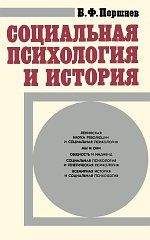Скотт Плаус - Психология оценки и принятия решений

Скачивание начинается... Если скачивание не началось автоматически, пожалуйста нажмите на эту ссылку.
Жалоба
Напишите нам, и мы в срочном порядке примем меры.
Описание книги "Психология оценки и принятия решений"
Описание и краткое содержание "Психология оценки и принятия решений" читать бесплатно онлайн.
Книга посвящена психологии принятия решений - теме, находящейся на стыке когни-тивной и социальной психологии и практически не освещенной в современной литературе. Автор в доступной форме анализирует особенности восприятия, памяти, модели принятия решений, социальную сторону оценки, выбора и принятия решений, типичные ситуации. Книга насыщена примерами из реальной жизни, тестами и уникальными упражнениями. Она поможет читателю понять механизм формирования оценки и принятия решений, а значит, избежать многих ошибок, просчетов и ловушек, подстерегающих его на этом пути.
No. 416). Ausubel, N. (Ed.). (1948). A treasury of Jewish folklore: Stories, traditions,
legends, humor, wisdom and folk songs of the Jewish people.New York:
Crown Publishers. Ayton, P., Hunt, A. J., Wright, G. (1989). Psychological conceptions of
randomness. Journal of Behavioral Decision Making, 2,221—238. Bakan, P. (1960). Response tendencies in attempts to generate random binary series. American Journal of Psychology, 73,127—131. Bandura, A. (1982). Self-efficacy: Mechanism in human agency. American
Psychologist, 37,122-147.
Bandura, A. (1986). Social foundations of thought and action: A social cognitive theory.Englewood Cliffs, NJ: Prentice-Hall. Barclay, S., Beach, L. R. (1972). Combinatorial properties of personal
probabilities. Organizational Behavior and Human Performance, 8,179—183. Bar-Hillel, M. (1973). On the subjective probability of compound events.
Organizational Behavior and Human Performance, 9,396—406.
325
Bar-Hillel, M. (1980). The base-rate faiiacy in probability judgments. Ada
Psychologica, 44,211-233. Bar-Hillel, M. (1990). Back to base rates. In R. M. Hogarth (Ed.), Insights
in decision making: A tribute to Hillel J. Einhorn.Chicago: University of
Chicago Press. Batson, C. D. (1975). Attribution as a mediator of bias in helping. Journal of
Personality and Social Psychology, 32,455—466. Batson, С D., Marz, B. (1979). Dispositional bias in trained therapists'
diagnoses: Does it exist? Journal of Applied Social Psychology, 9,476—489. Baxter, T. L., Goldberg, L. R. (1987). Perceived behavioral consistency
underlying trait attributions to oneself and another: An extension of the
actor-observer effect. Personality and Social Psychology Bulletin, 13, 4 Ъ 1— Щ 1.Bazerman, M. H., Giuliano, Т., Appelman, A. (1984). Escalation of commitment in individual and group decision making. Organizational Behavior and Human Performance, 33,141—152. Bedau, H. A., Radelet, M. L. (1987). Miscarriages of justice in potentially
capital cases. Stanford Law Review, 40,21—179. Bell, D. E. (1982). Regret in decision making under uncertainty. Operations
Research, 30,961-981. Bell, D. E. (1985). Disappointment in decision making under uncertainty.
Operations Research, 33,1—27. Bern, D. J. (1972). Self-perception theory. In L. Berkowitz (Ed.), Advances
in experimental social psychology(Vol. 6). New York: Academic Press. Ben Zur, H., Breznitz, S. J. (1981). The effects of time pressure on risky
choice behavior. Ada Psychologica, 47,89—104. Bernoulli, D. (1738/1954). Exposition of a new theory on the measurement
of risk, translated by Louise Sommer. Econometrica, 22,22—36. Beyth-Marom, M. (1982). Perception of correlation reexamined. Memory
Cognition, 10,511-519.
Bierbrauer, G. (1973). Effect of set, perspective, and temporal factors in attribution.Unpublished doctoral dissertation, Stanford University. Bishop, G.F., Oldendick, R. W., Tuchfarber, A. J., Bennett, S. E. (1980).
Pseudo-opinions on public affairs. Public Opinion Quarterly, 44,198—209. Blascovich, J., Ginsburg, G. P., Howe, R. С (1975). Blackjack and the
risky shift, II: Monetary stakes. Journal of Experimental Social Psychology,
11,224-232. Block, J. R., Yuker, H. E. (1989). Can you believe your eyes?New York:
Gardner Press.
Blodgett, R. (1983, November). Against all odds. Games,pp. 14—18. Bond, С F., Jr., Titus, L. J. (1983). Social facilitation: A meta-analysis of
241 studies. Psychological Bulletin, 94,265—292. Borgida, E., Nisbett, R. E. (1977). The differential impact of abstract vs.
concrete information on decisions. Journal of Applied Social Psychology, 7,
258-271.
326
Borrelli, S., Lockerbie, В., Niemi, R. G. (1987). Why the Democrat-Republican partisanship gap varies from poll to poll. Public Opinion Quarterly, 51,115-119.
Bostic, R., Herrnstein, R. J., Luce, R. D. (1990). The effect on the preference-reversal phenomenon of using choice indifferences. Journal of Economic Behavior and Organization, 13,193—212.
Bourne, L. E., Jr., Guy, D. E. (1968). Learning conceptual rules: II. The role of positive and negative instances. Journal of Experimental Psychology, 77,488-494. Bransford, J. D., Franks, J. J. (1971). The abstraction of linguistic ideas.
Cognitive Psychology, 2,331—350.
Brickman, P., Coates, D., Janoff-Bulman, R. (1978). Lottery winners and accident victims: Is happiness relative? Journal of Personality and Social Psychology, 36,917-927. Brockner, J., Rubin, J. Z. (1985). Entrapment in escalating conflicts:
A social psychological analysis.New York: Springer-Verlag. Brockner, J., Rubin, J. Z., Lang, E. (1981). Face-saving and entrapment.
Journal of Experimental Social Psychology, 17,68—79. Brockner, J., Shaw, M. C, Rubin, J. Z. (1979). Factors affecting withdrawal from an escalating conflict: Quitting before it's too late. Journal of Experimental Social Psychology, 15,492—503. Brophy, J. E. (1983). Research on the self-fulfilling prophecy and teacher
expectations. Journal of Educational Psychology, 75,631—661. Brown, E., Deffenbacher, K., Sturgill, W. (1977). Memory for faces and the circumstances of encounter. Journal of Applied Psychology, 62,311—318. Bruner, J. S., Postman, L. J. (1949). On the perception of incongruity:
A paradigm. Journal of Personality, 18,206—223. Budiansky, S. (1988), July 11). The numbers racket: How polls and statistics
lie. U.S. News World Report,pp. 44—47.
Campbell, J. D., Tesser, A. (1983). Motivational interpretations of hindsight bias: An individual difference analysis. Journal of Personality, 51,605-620. Cantril, H. (1940). Experiments in the wording of questions. Public Opinion
Quarterly, 4,330-332. Carden, G. (1990, September 25). Strangers, but they share unbelievable
mirror-image lives. National Enquirer,p. 19.
Carroll, J. S. (1978). The effect of imagining an event on expectations for the event: An interpretation in terms of the availability heuristic. Journal of Experimental Social Psychology, 14,88—96.
Centor, R. M., Dalton, H. P., Yates, J. F. (1984). Are physicians'probability estimates better or worse than regression model estimates?Paper presented at the Sixth Annual Meeting of the Society for Medical Decision Making, Bethesda, MD.
327
Cervone, D., Peake, P. K. (1986). Anchoring, efficacy, and action: The influence of judgmental heuristics on self-efficacy judgments. Journal of Personality and Social Psychology, 50,492—501.
Chandler, T. A., Shama, D. D., Wolf, F. M., Planchard, S. K. (1981). Multiattributional causality: A five cross-national samples study. Journal of Cross-Cultural Psychology, 12,207-221. Chapman, L. J. (1967). Illusory correlation in observational report. Journal
of Verbal Learning and Behavior, 6,151—155.
Chapman, L. J., Chapman, J. P. (1967). Genesis of popular but erroneous psychodiagnostic observations. Journal of Abnormal Psychology, 72,193—204. Chapman, L. J., Chapman, J. P. (1969). Illusory correlation as an obstacle to the use of valid psychodiagnostic signs. Journal of Abnormal Psychology, 74,271-280.
Chapman, L. J., Chapman, J. P. (1971, November). Test results are what you think they are. Psychology Today,pp. 18—22, 106—110.
Cheng, P. W., Novick, L. R. (1990). A probabilistic contrast model of causal induction. Journal of Personality and Social Psychology, 58,545—567.
Christensen, D., Rosenthal, R. (1982). Gender and nonverbal decoding skill as determinants of interpersonal expectancy effects. Journal of Personality and Social Psychology, 42,75—87.
Christensen-Szalanski, J. J. J., Beach, L. R. (1984). The citation bias: Fad and fashion in the judgment and decision literature. American Psychologist, 39,75-78.
Christensen-Szalanski, J. J. J., Beck, D. E., Christensen-Szalanski, С. М., Koepsell, T. D. (1983). Effects of expertise and experience on risk judgments. Journal of Applied Psychology, 68,278—284.
Christensen-Szalanski, J. J. J., Bushyhead, J. B. (1981). Physicians' use of probabilistic information in a real clinical setting. Journal of Experimental Psychology: Human Perception and Performance, 7,928—935.
Christensen-Szalanski, J. J. J., Willham, C. F. (1991). The hindsight bias: A meta-analysis. Organizational Behavior and Human Decision Processes, 48,147-168.
Clifford, B. R., Scott, J. (1978). Individual and situational factors in eyewitness testimony. Journal of Applied Psychology, 63,352—359.
Clymer, A. (1982, May 6). Nuclear issue yields run on pollsters. New York Times,p. В14.
Cohen, B. L., Lee, I. (1979). A catalog of risks. Health Physics, 36,707-722.
Cohen, J., Chesnick, E. I., Haran, D. (1971). Evaluation of compound probabilities in sequential choice. Nature, 232,414—416.
Combs, В., Slovic, P. (1979). Newspaper coverage of causes of death. Journalism Quarterly, 56,837—843, 849.
Converse, P. E., Schuman, H. (1970, June). "Silent majorities" and the Vietnam war. Scientific American,pp. 17—25.
328
Coombs, С. Н. (1975). Portfolio theory and the measurement of risk. In M. F. Kaplan S. Schwartz (Eds.), Human judgment and decision processes.New York: Academic Press.
Cooper, W. H. (1981). Ubiquitous halo. Psychological Bulletin, 90,218—244.
Coren, S., Miller, J. (1974). Size contrast as a function of figural similarity. Perception and Psychophysics, 16,355—357.
Corey, S. M. (1937). Professed attitudes and actual behavior. Journal of Educational Psychology, 28,271—280.
Costanza, R. (1984). Review essay: The nuclear arms race and the theory ofsocial traps. Journal of Peace Research, 21,79—86.
Craig, K. D., Prkachin, К. М. (1978). Social modeling influences on sensory decision theory and psychophysiological indexes of pain. Journal of Personality and Social Psychology, 36,805—815.
Crandall, V. J., Solomon, D., Kellaway, R. (1955). Expectancy statements and decision times as functions of objective probabilities and reinforcement values. Journal of Personality, 24,192—203.
Crocker, J. (1981). Judgment of covariation by social perceivers. Psychological Bulletin, 90,272-292.
Crocker, L. (1982). Biased questions in judgment of covariation studies. Personality and Social Psychology Bulletin, 8,214—220.
Cross, J. G., Guyer, M. J. (1980). Social traps.Ann Arbor: University of Michigan Press.
Darley, J. M., Batson, С D. (1973). "From Jerusalem to Jericho": A study of situational and dispositional variables in helping behavior. Journal of Personality and Social Psychology, 27,100—108.
Darley, J. M., Fazio, R. H. (1980). Expectancy confirmation processes arising in the social interaction sequence. American Psychologist, 35,867—881.
Darley, J. M., Latane, B. (1968). Bystander intervention in emergencies; Diffusion of responsibility. Journal of Personality and Social Psychology, 8,377-383.
Davis, J. H. (1973). Group decision and social interaction: A theory ofsocial decision schemes. Psychological Review, 80,97—125.
Dawes, R. M. (1975). The mind, the model, and the task. In F. Restle, R. M. Shiffrin, N. J. Castellan, H. R. Lindman, D. B. Pisoni (Eds.), Cognitive theory(Vol. 1). Hillsdate, NJ: Erlbaum.
Dawes, R. M. (1980). Social dilemmas. Annual Review of Psychology, 31,169-193.
Dawes, R. M., Faust, D., Meehl, P. E. (1989). Clinical versus actuarial judgment. Science, 243,1688—1674.
"Death Odds". (1990, September 24). Newsweek,p. 10.
Deci, E. L. (1975). Intrinic motivation.New York: Plenum Press.
Deffenbacher, K. A. (1980). Eyewitness accuracy and confidence. Law and Human Behavior, 4,243—260.
329
Diener, D., Thompson, W. B. (1985). Recognizing randomness. American Journal of Psychology, 98,433—447.
Dion, K., Berscheid, E., Walster, E. (1972). What is beautiful is good. Journal of Personality and Social Psychology, 24,285—290.
Doob, A. N., Carlsmith, J. M., Freedman, J. L., Landauer, Т. К., Tom, S., Jr. (1969). Effect of initial selling price on subsequent sales. Journal of Personality and Social Psychology, 11,345—350.
Dube-Rioux, L., Russo, J. E. (1988). An availability bias in professional judgment. Journal of Behavioral Decision Making, 1,223—237.
Подписывайтесь на наши страницы в социальных сетях.
Будьте в курсе последних книжных новинок, комментируйте, обсуждайте. Мы ждём Вас!
Похожие книги на "Психология оценки и принятия решений"
Книги похожие на "Психология оценки и принятия решений" читать онлайн или скачать бесплатно полные версии.
Мы рекомендуем Вам зарегистрироваться либо войти на сайт под своим именем.
Отзывы о "Скотт Плаус - Психология оценки и принятия решений"
Отзывы читателей о книге "Психология оценки и принятия решений", комментарии и мнения людей о произведении.


























